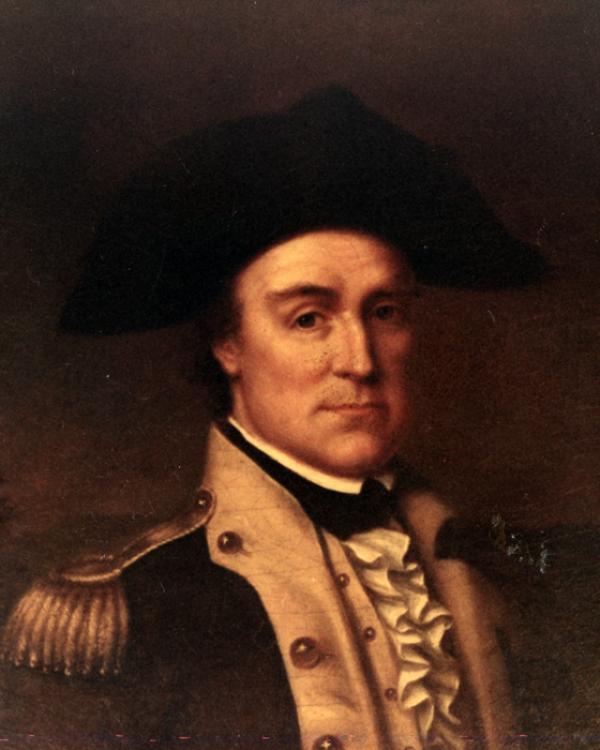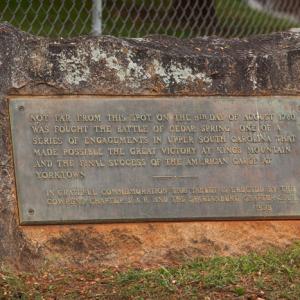Google Maps has been provided as a resource.
The Battle of the Peach Trees

Image Credit: Hargrett Rare Books & Manuscripts Library, University of Georgia Libraries
Col. Elijah Clarke
- Driving Instructions
-
Location Information
The Battle of the Peach Trees
Forces commanded by British Major Patrick Ferguson attacked Patriots led by Colonel Elijah Clarke and Colonel Isaac Shelby who occupied a peach orchard near Cedar Spring. Clarke and Shelby repulsed the attack with savage, up-close fighting. Clarke was known as one of the fiercest fighters on the Southern frontier during the American Revolution.
Clarke was known as one of the fiercest fighters on the Southern frontier during the American Revolution.
Near the intersection of Dogwood Club and Old Petrie Roads (across from 680 Delmar Road)
-
More History
Col. Elijah Clarke
Present on the field in the Battle of the Peach Trees was Col. Elijah Clarke, a Georgia militia officer who doesn't always get as much recognition as he deserves. Col. Clarke was one of the most daring Partisan leaders in the war and was especially active in the Spartanburg area.
Elijah Clarke was born in the 1730's in North Carolina, but began moving early in his life. He was one of the first settlers of the Grindall Shoals area on the Pacolet River in what is now Spartanburg County, but by the outbreak of the American Revolution he was living in eastern Georgia. Despite being poor, uneducated and illiterate, he raised a regiment of militia and gained the rank of Colonel to lead it. After the British capture of Charleston in May 1780, Patriot militia forces from throughout the southeast began to arrive in the South Carolina backcountry to oppose the British advance. Col. Clarke and his Georgians were among them. During the summer of 1780, Col. Clarke participated in the battles of the Peach Trees, Wofford's Iron Works, and Musgrove's Mill and was wounded at Peach Trees and Musgrove's Mill. After the British victory over Gen. Horatio Gates at Camden in August 1780, Col. Clarke returned to Georgia but returned by the fall of 1780 for the battles of Fish Dam Ford and Blackstock's.
After the Revolution, Col. Clarke received land in Georgia that was seized from a Loyalist rival and he continued to be a leader of men, though not in as glorious a way as during the Revolution. In 1794, Clarke led a group of Georgia volunteers across the Oconee River in north Georgia into Creek Indian territory with the goal of forming his own state. The Trans-Oconee Republic, as it was known, was put down by Georgia troops and the idea never came to fruition. Clarke was involved in many legal disputes for the remainder of his life, though he was always be regarded as a hero by those who knew him.
Elijah Clarke died in Georgia in 1799, but his contribution to America's independence should not be forgotten. This is especially true of the fighting he did in the Spartanburg area during the American Revolution. His leadership, bravery and ferocity on the battlefield are among the best known in the entire Southern Campaign.
- Additional Images
© Copyright Spartanburg Convention and Visitors Bureau. All Rights Reserved.
Produced by MoreView Media


